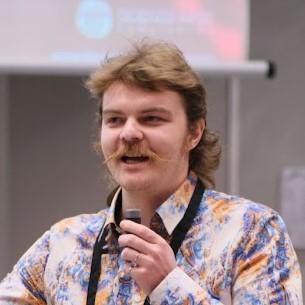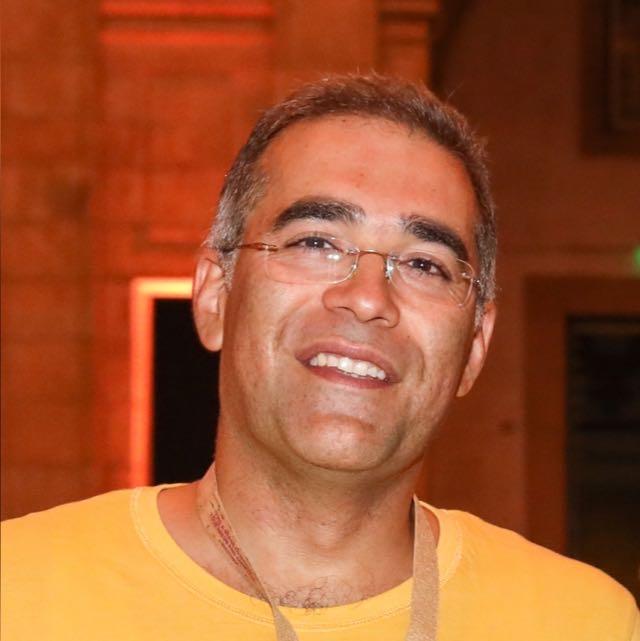Tutorials
In EOSAM 2024, as in previous EOSAM conferences, in addition to the conference program including contributed and invited speakers, we wish to provide an additional benefit to all registered attendees in the form of tutorials covering Topical Meeting (TOM) and Focused session topics. The tutorials will be held on Monday, 9 September 2024.
Participation in these tutorials is free for all registered participants of the conference but pre-registration required for each tutorial. Registration is binding.

Sebastian Riese
LAYERTEC GmbH, Mellingen, Germany
How to Balance Complexity in Optical Design
Requirements for high-performance optics are continously increasing. As a result, substrate geometries and coatings grow more and more complex, posing challenges with respect to precision optics manufacturing, deposition technology and metrology as well as cost effectiveness and lead times. Navigating these constraints can be demanding, especially for beginners in the field. Possible issues, trade-offs and lessons learned will be presented here.
Sebastian’s tutorial will concern at least the following TOMs:
TOM3: Optical System Design, Tolerancing and Manufacturing
TOM7: Ultrafast Phenomena
TOM10: Applications of Optics and Photonics
Oliver Fähnle
OST – Eastern Switzerland University of Applied Sciences, Switzerland
From Optical Design to Optical Fabrication and Photonics Systems Generation

Jacopo Bertolotti
University of Exeter, United Kingdom
Scientific Visualizations: Animating Physics for Science Communication
If an image is worth a thousand words, how many is an animation worth? When is the effort needed to create an animation to visualize your science worth it? In this tutorial we will discuss the advantages and disadvantages of animations, and how someone without any artistic skills (like me) can produce effective ones for both outreach or as a teaching aid.

Ignacio Moreno Soriano
UNIVERSITAS Miguel Hernández, Spain
Spatial Light Modulators
This tutorial will present the fundamentals of spatial light modulator (SLM) technology, their modulation configurations, and techniques for their characterization. It will also cover the design of diffractive optical elements and its realization with SLMs. The tutorial will include a practical demonstration.
Francesca Intonti
University of Florence, Italy
Photonics of correlated disorder materials
This tutorial deals with light interaction of correlated disordered media, that are non-crystalline heterogeneous materials exhibiting pronounced spatial correlations in their structure and morphology. These materials that lie between the extremes of order and disorder, owing to their engineered disordered patterns, can yield innovative optical phenomena and even enhance the optical properties of ordered photonic systems.

Alberto Puliafito
University of Torino, Italy
Quantitative image processing of biochemical signals
A number of different techniques exist to extract quantitatively meaningful signals from digital images obtained by optical microscopy. This tutorial will present a quick overview of classical image processing techniques flanked by machine learning based techniques with the aim of quantifying live microscopy of living cells equipped with fluorescent biosensors.

Katerina Kusova
Czech Academy of Sciences, Czech Republic
Photoluminescence in quantum dots: filling the gaps between molecules and crystals
This year's Nobel Prize in Chemistry was awarded for the discovery and synthesis of quantum dots. Quantum dots are tiny objects notable especially for their optical properties, whose characteristics place quantum dots somewhere between molecules and macroscopic crystalline solids. This tutorial will provide an overview of the optical properties of quantum dots and their characterization.
Giovanni Pellegrini
University of Pavia, Italy
From Code to Light: Using Machine Learning and Optimization Techniques to Design Photonic Nanostructures
This tutorial explores the intersection between machine learning and nanophotonics. We will leverage neural networks, gradient-based and gradient-less optimization techniques for the efficient design of photonic nanostructures with tailored optical properties. With the help of the supplied Jupyter notebooks, participants will be able to immediately tackle the proposed design problems.

Luca Sortino
Ludwig-Maximillians-University Munich (LMU), Germany
Atomically thin optics
In this tutorial I will present the physics of two-dimensional (2D) materials and their optical properties, ranging from graphene to hexagonal boron nitride and transition metal dichalcogenides, bridging between optics and solid-state physics, following the historical evolution of the field of 2D materials and van der Waals heterostructures.
Luca's tutorial will concern at least the following TOMs:
TOM 5: Nanophotonics
TOM 6: Optical Materials
TOM 8: Nonlinear and Quantum Optics
TOM 10: Applications of Optics and Photonics

Stefania Campopiano
University of Naples "Parthenope"
Healthcare exploiting fiber optics sensors: towards a physical-based Digital Health
Fiber optics provided a precursor technology towards joint communication and sensing tools. Performances achieved by this technology in terms of many key indicators (e.g., accuracy, resilience, reliability, sustainability…), is rapidly obtaining consensus in the healthcare area which is attracted by sound physical-based paths toward the often too intangible Digital Health.
Stefania's tutorial will provide an excursus on the research in the field from the methodological perspective to the prototypal implementation in biomedical field.

Dawson Bonneville
University of Twente
Aluminium Oxide as a Versatile Broadband Waveguide Platform: From material fundamentals, fabrication and processing, to devices, applications and enabled technologies
This tutorial will provide an overview of the Al2O3 waveguide platform and how it applies to a wide variety of technologies due to its broadband transparency and rare earth solubility. An in-depth summary of material fundamentals, processing and fabrication, and device operation will be discussed, as well as the applications and technologies enabled by the platform.

Roozbeh Shokri
Thorlabs GmbH
Fluoride Glass and Optical Fibers
Thorlabs manufactures an extensive family of mid-IR fluoride fiber using proprietary techniques that provide world-class purity, precision, and strength. These techniques give us excellent control over the fibers' optical and mechanical properties, allowing a wide range of configurations to be drawn. In this tutorial we will highlight these techniques, the history of fluoride fiber R&D, and the state of fluoride fiber technology today and in the future.
Roozbeh's tutorial will concern at least the following TOMs:
TOM3: Optical System Design, Tolerancing and Manufacturing
TOM 6: Optical Materials
TOM 10: Applications of Optics and Photonics



